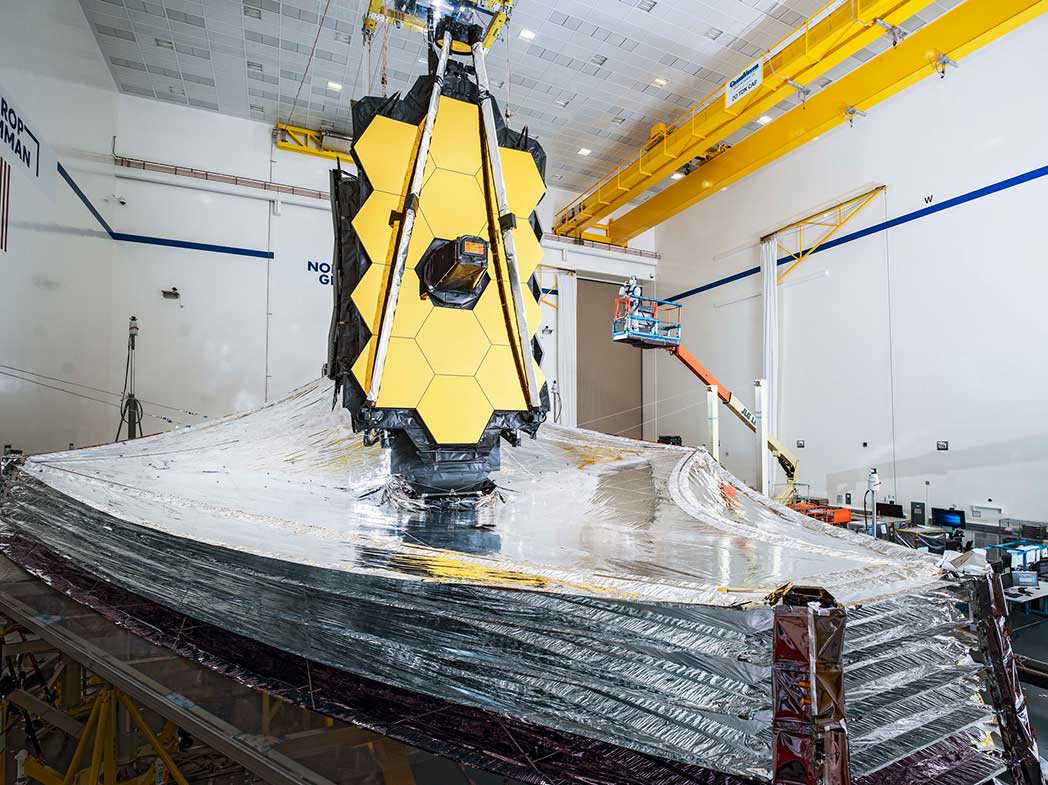Daily Do
How does the JWST’s sunshield help maintain the operating temperature of the infrared instruments?

Lesson Snapshot
High school students, as scientists, investigate definitions of energy and electromagnetic radiation to answer the following driving question: How does the JWST’s sunshield help maintain the operating temperature of the infrared instruments? Students are introduced to a phenomenon: the JWST system has a hot side and a cold side with instruments that need to stay at very cold operating temperatures. Separating the two sides is a sunshield. Students evaluate information about the JWST’s open design and a different space telescope with a closed design (Hubble). Students record observations and questions and develop initial models. Students next consider related phenomena. Students plan and carry out investigations that help them identify patterns related to light and energy transfer. Next, students use two simulations to investigate energy transfer and temperature at the atomic scale. Students also evaluate information in an article about electromagnetic radiation. Students revise their initial models using data, simulation observations, and information from the article. Finally, students create a Driving Question Board (DQB) to capture their questions about the phenomenon and discuss what they will investigate in the next lesson.
This lesson is Lesson 1 of the Energy Transfer in the JWST System Playlist
This playlist was created in collaboration with Northrop Grumman and supported by the Northrop Grumman Foundation.
Click the Download PDF button at the top of the page for the complete Lesson Plan.
Materials
Student Materials
Per Group of Four
- infrared thermometer
- scissors and ruler
- tapes
- aluminum foil
- inside of chip bags
- cardstock/poster
- metal block (not aluminum)
- timer
- heat lamps
- safety glasses with side shields or safety goggles
- Internet-connected device
Per Student
Teacher Materials
Optional Teacher Resources






